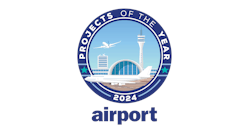First-Class Essentials: Getting the Basics Right is the Key to the Perfect Airport Experience
Picture it now: a dip in a rooftop pool, a Singapore Sling in hand, some high-class shopping followed by a fabulous meal. The stuff of stopover dreams, right? Not exactly.
No, the answer to the perfect passenger experience lies in something far less spectacular, but far more important.
Passenger experience is key in the competitive world of aviation - especially when you consider that it is predicted the world’s airports will see some 9.7 billion passengers coming and going over the course of 2024. And airports are getting more and more creative to entice intrepid travellers through their doors.
Extravagant water features, plentiful entertainment options and eye-catching design have become the gold standard. That aviation is looking outside its bubble, taking inspiration from other sectors in a bid to win customers, and retain existing ones, should be seen as a good thing. Some are doing it truly brilliantly - Singapore Changi has earned the moniker of ‘the destination before your destination’.
The trouble is - these waterfalls and terraced tropical gardens are ‘nice-to-haves’ and surface-level flourishes. These features alone aren’t what make or break the passenger experience.
What passengers really love is actually quite boring by comparison: a fast-moving security queue, on-time departures and a friendly face at immigration.
Making queues move fast and your staff smile is important, but not just in their own right - research from Aerocloud revealed that “82% of passengers indicate they would spend more if they could move through check-in and security more quickly.”
So, if we look past the glamorous and the entertaining, the reasons behind the top-performing airports’ success become much more apparent. Doha Hamad and Singapore Changi have retained their positions at the top of the Skytrax ranking in the one and two spots because they know that the best way to leave a lasting positive impression on travellers is simple: getting the fundamentals right.
The Fundamentals Cannot be Overlooked
In our research at Designit, we have found that functional components such as how people navigate to, from, and within the airport, along with check-in and security processes, and wait times are what leave a lasting impression.
This might seem obvious - but there are notable examples in which these aspects of passenger experience have been overlooked in favour of elaborate design choices.
Abu Dhabi International, for instance, gets a lot right. Its arrivals section is world-renowned, boasting state-of-the-art features, and what is widely acknowledged as the most impressive collection of luxury retail and relaxation options. Its digital solutions are lauded too - helping to automate otherwise tedious aspects of the airport journey.
That said, Designit’s analysis found it was often criticised for its congested terminal experience. Automation and digital services are a good way to impress travellers, but they won’t make up for an issue of physical space.
Singapore Changi, deservedly, is widely commended also - but it too, is an example of how simple things that make for a smooth passenger experience can be overlooked. Much like the rest of the airport, its digital app is very pretty, but our research showed that its functionality and content left travellers unimpressed and even frustrated.
These may seem like minor gripes - especially for Changi, which is, overall, one of the best performing airports across all metrics. The fact remains, though, that travellers will never fail to pick up on inefficiencies in the airport experience when it comes to the basics. No number of retail options or water features will be an adequate distraction. Small, but crucial errors show how easy it can be to focus on the cherry on top, rather than the cake underneath.
The Digital Should Enhance the Physical
When implementing digital solutions that are designed to enhance customer experience, again, ensuring the fundamentals aren’t neglected is key.
The travel experience is an inherently human one. Some airports keep this firmly front-of-mind, like LAX - and not just in relation to travellers. Designit’s work with LAX involved developing the Altitude app, the focus of which is improving the employee experience. The app helps address problems and improve efficiencies in physical spaces, like making it easier to quickly report issues around the airport, enabling efficient tracking and resolution. It includes a Q&A section where employees can find answers to frequently asked traveller questions, allowing them to provide better service. By simplifying tasks and providing easily accessible tools, this application of technology is enabling employees to be present when it matters most.
The goal for Altitude wasn’t just to make the working lives of LAX employees easier, though - it was about making them feel cared for too. Employee discounts through the app make airport workers feel appreciated, creating a trickle-down effect: happier airline workers lead to happier travellers.
Considering the airport experience revolves around physical touchpoints, technology should be implemented to enhance that - and AI is no different. AI might be the shiny new toy everyone wants to play with, but travellers will quickly forget about (and potentially grow irritated) its novelty if it doesn’t integrate seamlessly into their journey.
Dallas Fort Worth understands the need for technology to serve rather than divert from physical experiences. Over a six month period, its AI concierge, Iris, spoke to travellers at dedicated information kiosks. It’s a small touch, but it means that passengers can feel attended to in the same way they would be by a person. While Iris was active, she didn’t just help travellers find their way. Her implementation meant the team at DFW could identify a variety of other physical issues that needed addressing, particularly to do with ambient noise and language diversity.
DFW proves a great example of how airports should experiment and play with their implementation of AI and technology in general - because in essence, the challenge when it comes to new tech is making sure the right tools are in the right place, at the right time. An app might be the easiest and most convenient tool for some use cases on the go, while a physical installation like DFW's Iris might be better suited to others. To execute this successfully requires understanding the traveller deeply and providing what they need - whether human touch, physical challenges or support in the palm of their hand through a fully digital experience.
Lessons in customer experience from outside aviation
Getting the fundamentals right isn’t just vital in the world of aviation. Take Disney and its theme parks (which have many similarities with airports!). Guests are kept informed of waiting times, reducing uncertainty. And for the “extra”, Disney incorporates interactive and fun elements within their queues, which lower stress. The addition of Lightning Lanes and Virtual Queuing provides an element of control, allowing guests to choose where and how to use their time.
Another best practice is ensuring all components of the customer experience are well-integrated, perhaps the best example of which is Apple. The entire experience is completely cohesive - Apple’s ecosystem is immaculate, and intuitive, and leaves users wanting more. Apple products and services work seamlessly together, providing a user-friendly and satisfying experience. Airports need to emulate this by ensuring that all aspects of the passenger journey are interconnected and intuitive.
The crucial point though, is this: to leave a lasting, positive impression on your customers, regardless of industry, you have to nail the basics. A poor experience with the fundamental components - such as parking or cleanliness - overshadows any additional amenities or features a business has to offer, especially when it comes to airports. Ensuring that these fundamental aspects are smooth and pleasant is crucial, as it frees passengers up to appreciate the additional services and amenities that enhance their journey.





